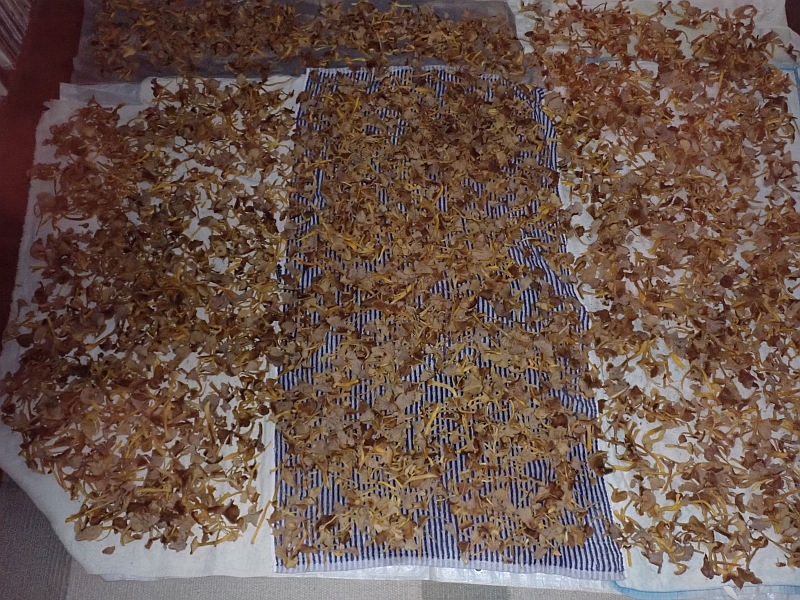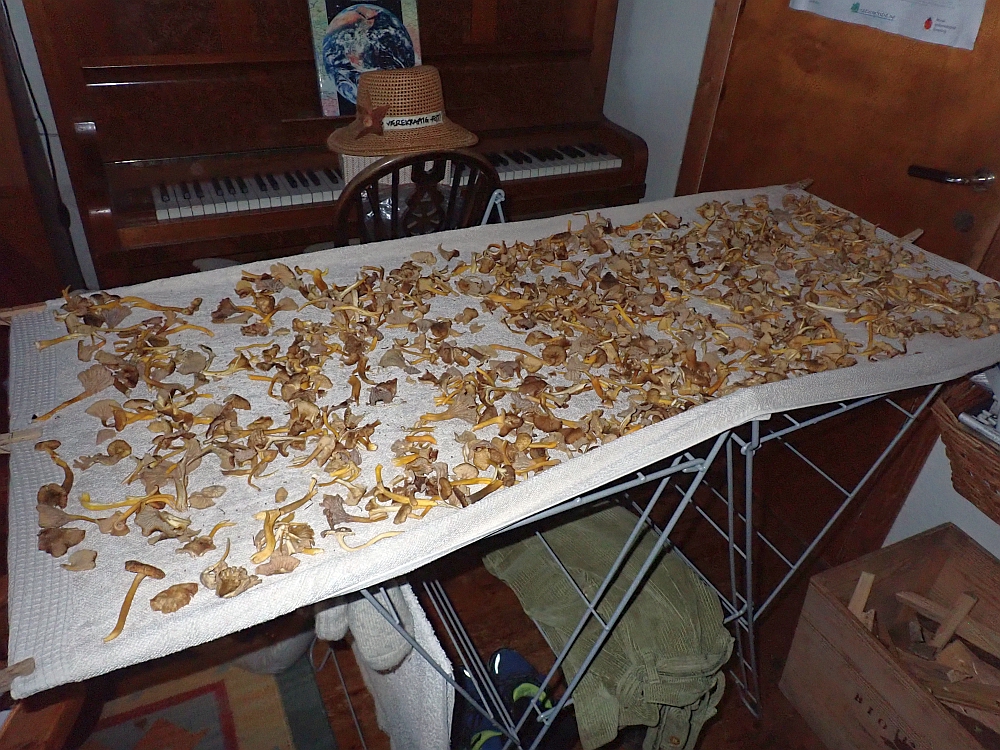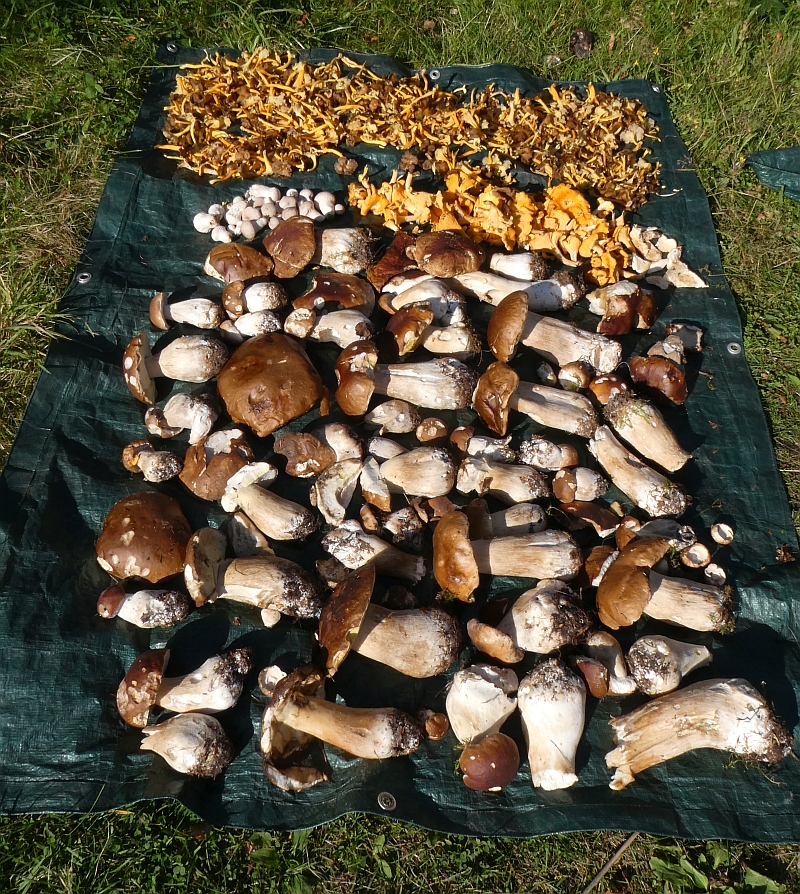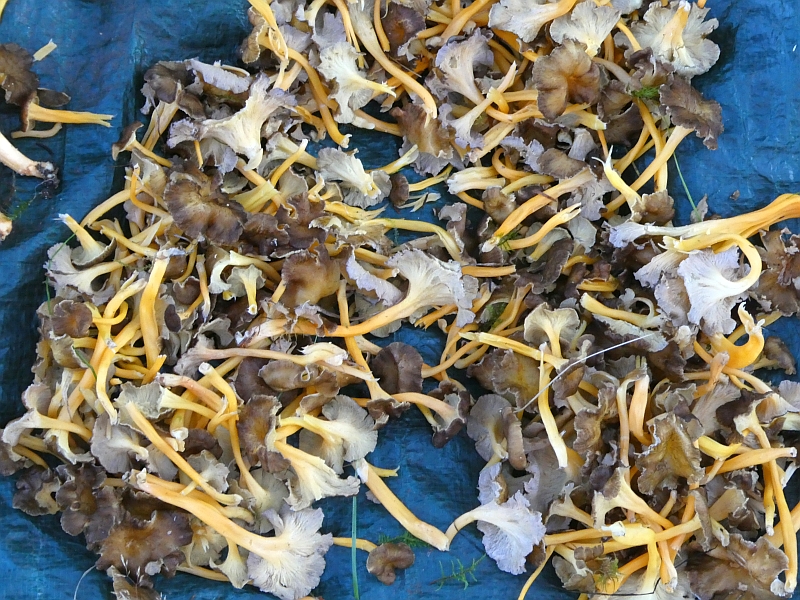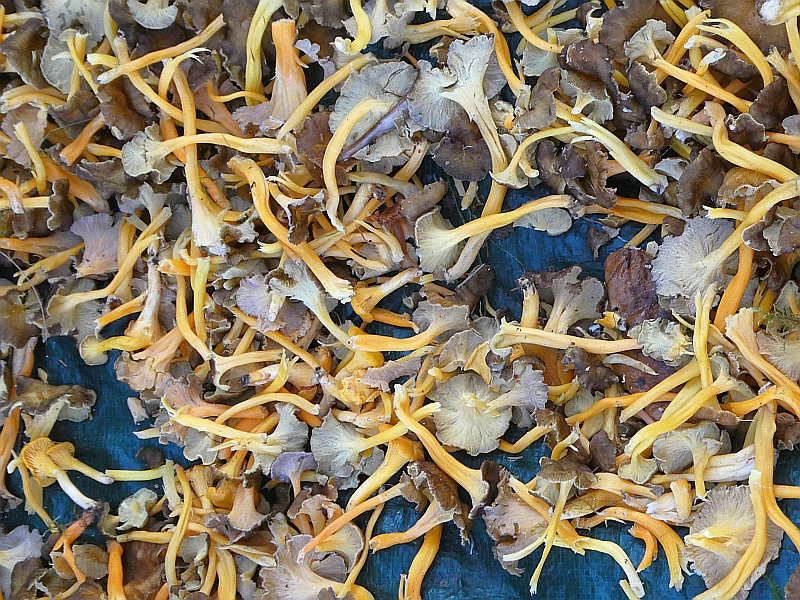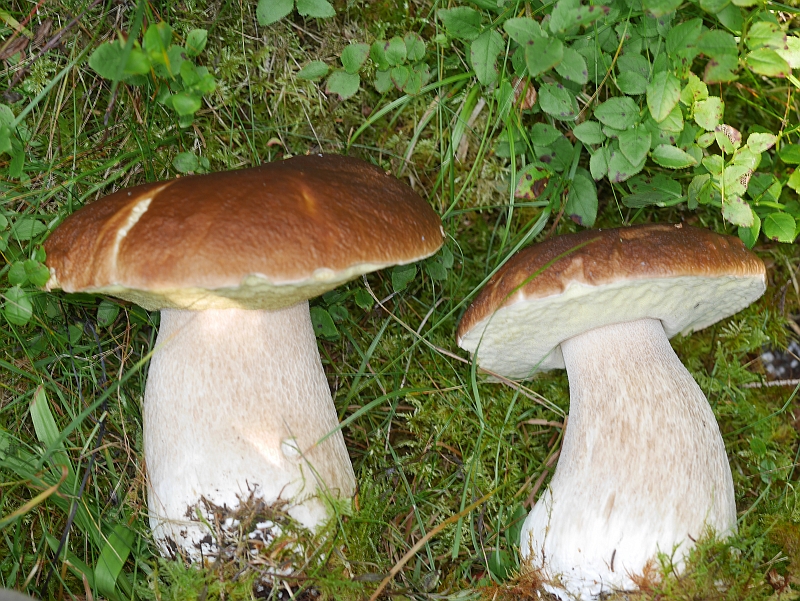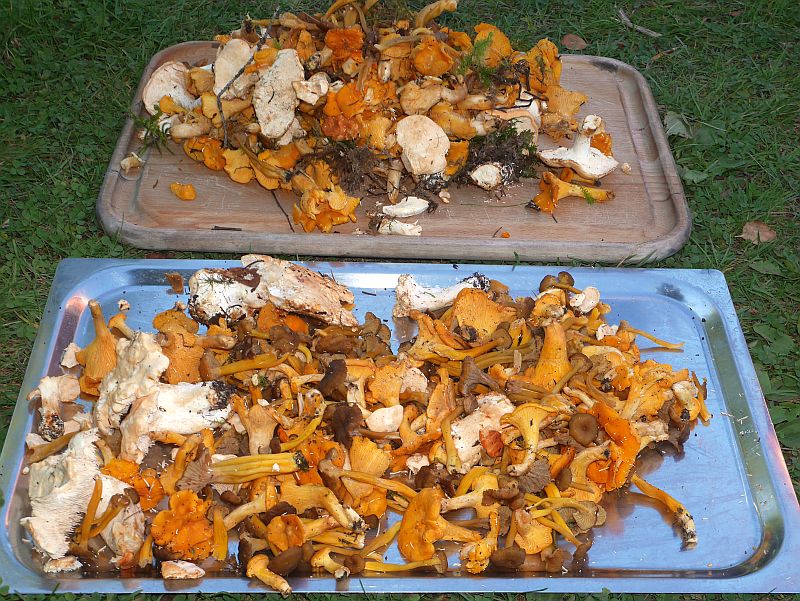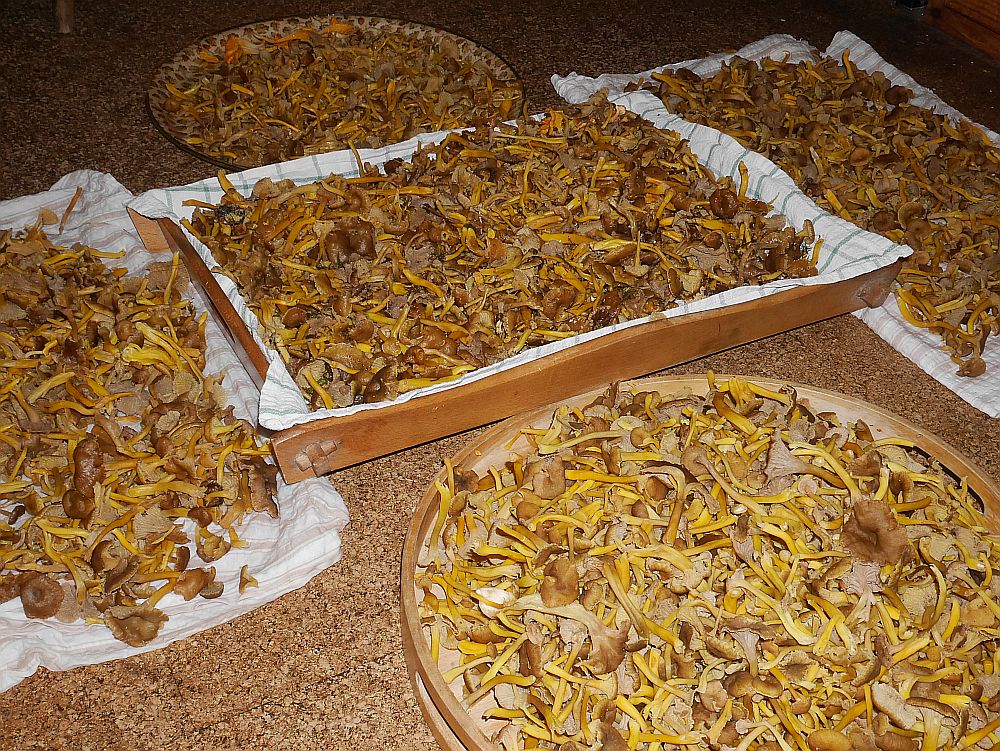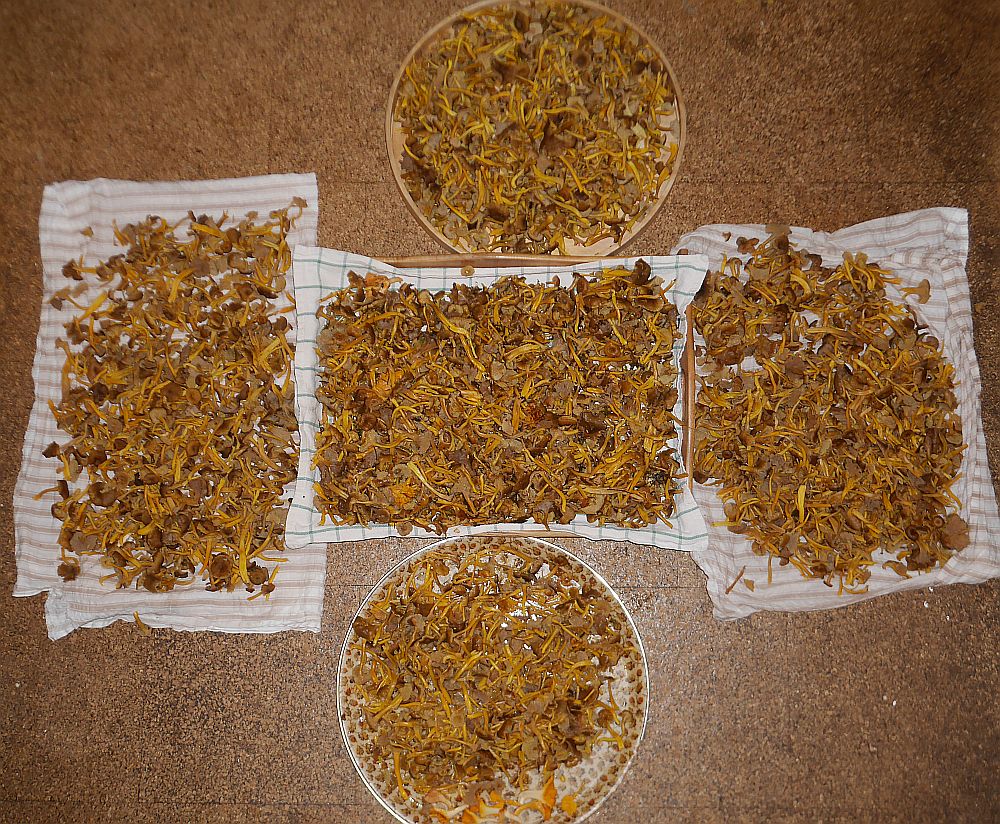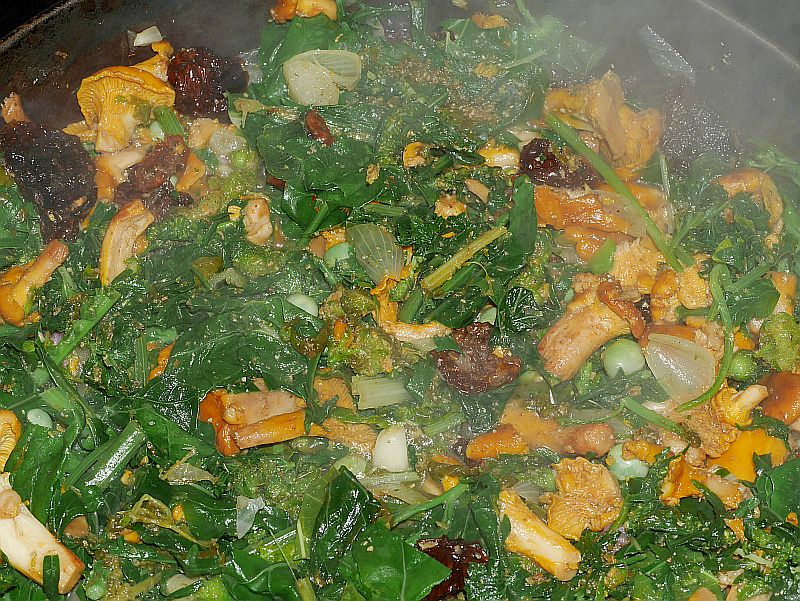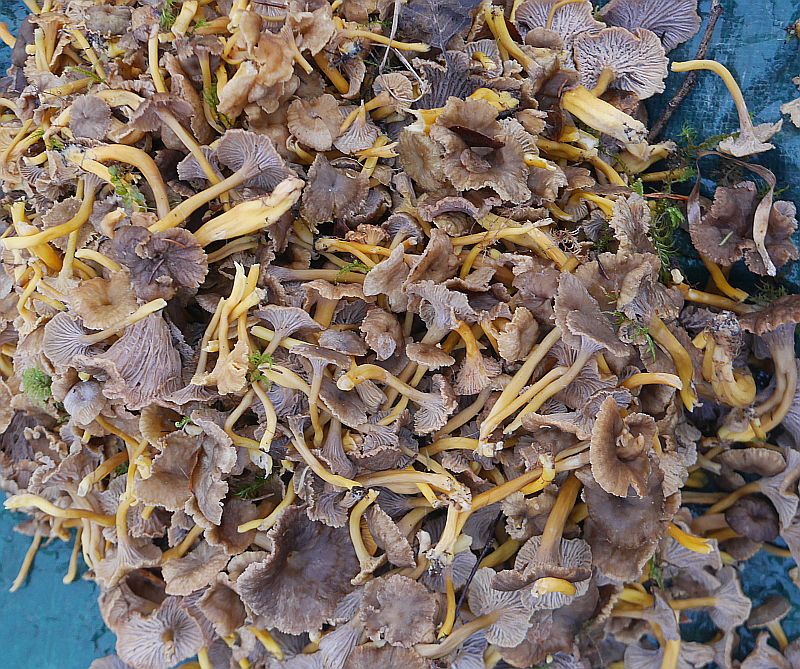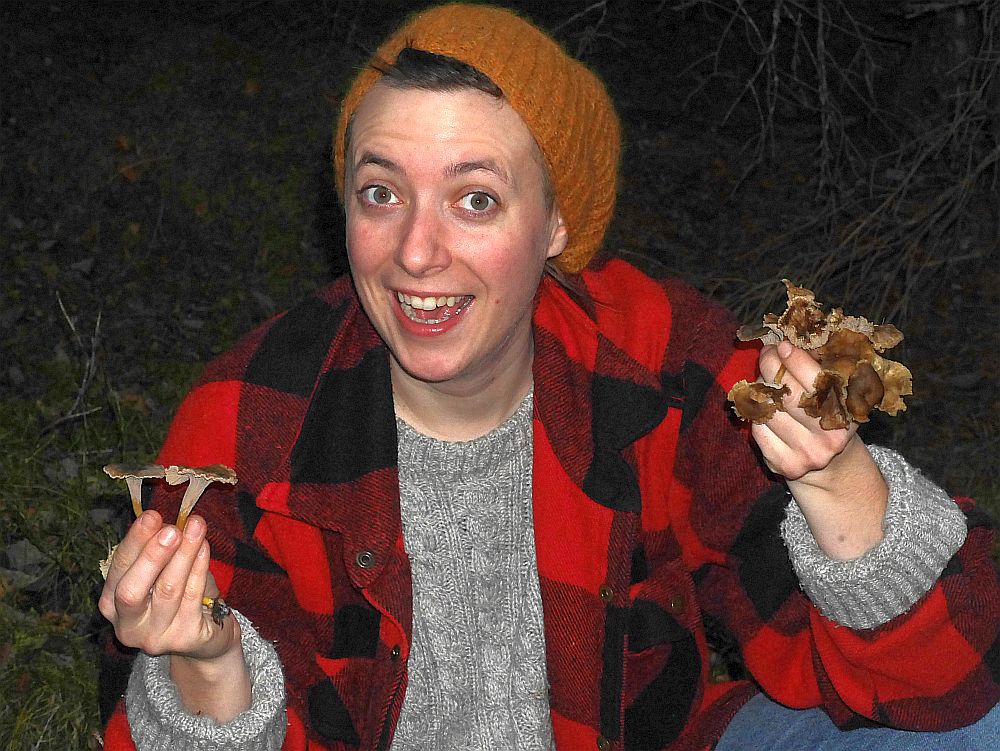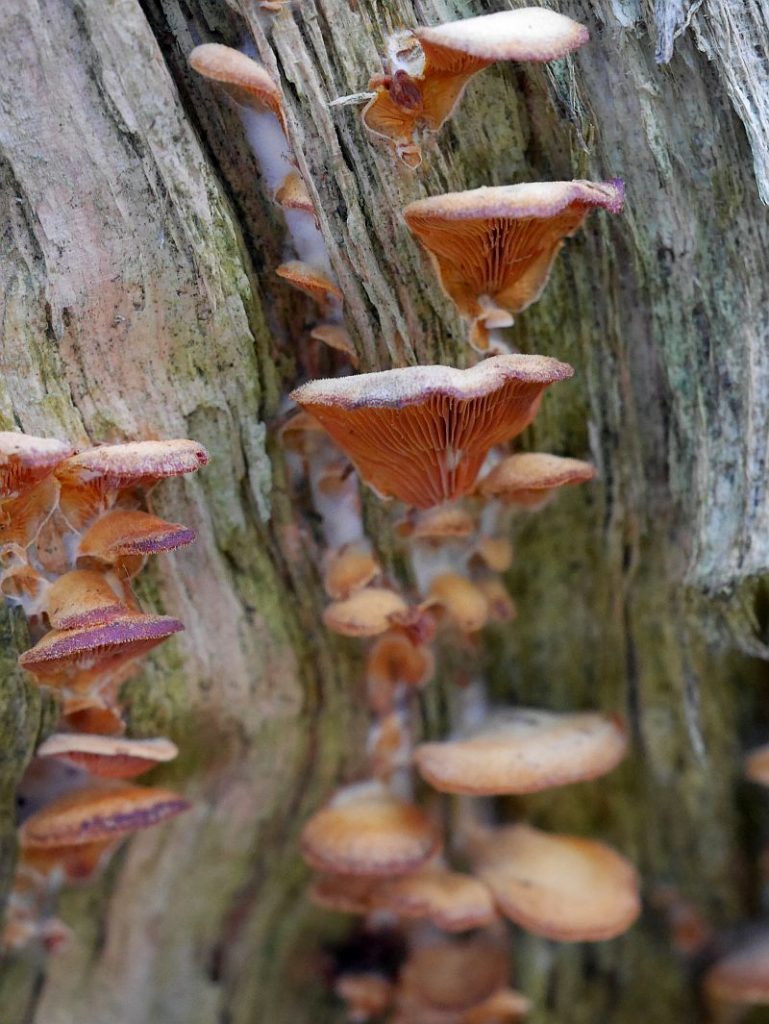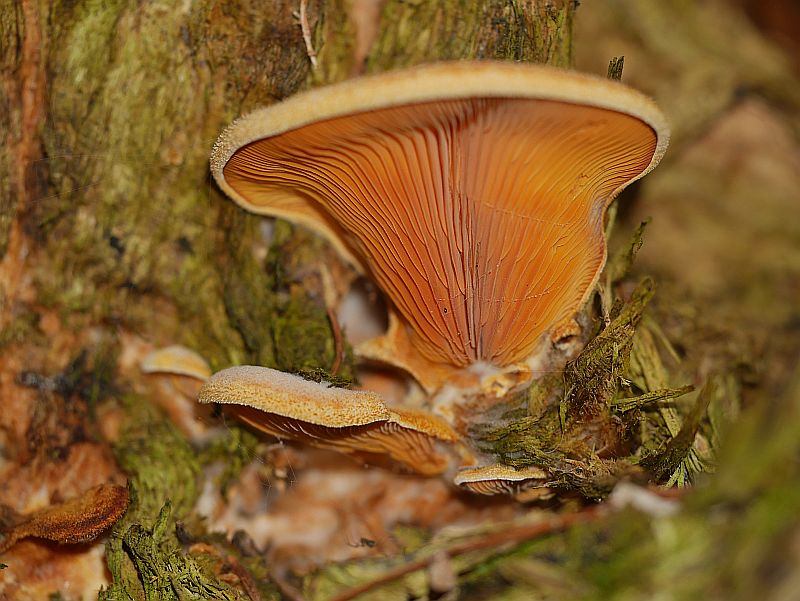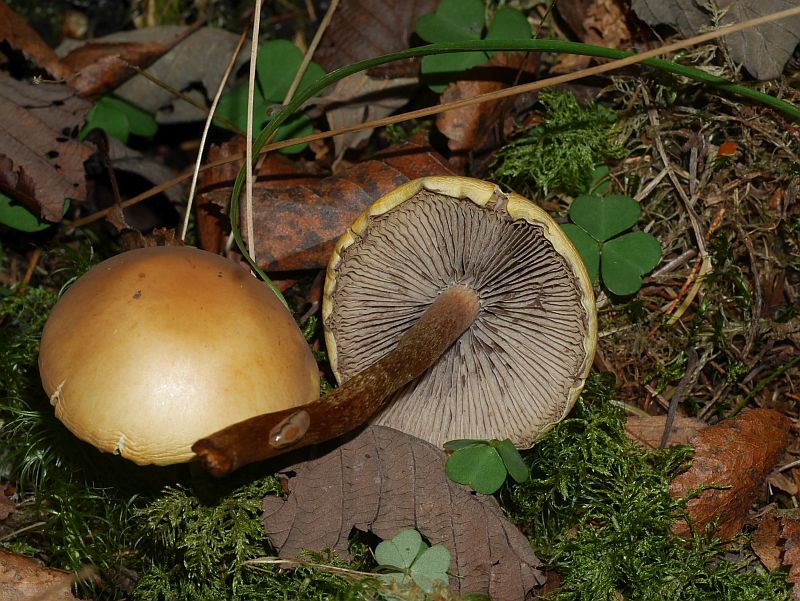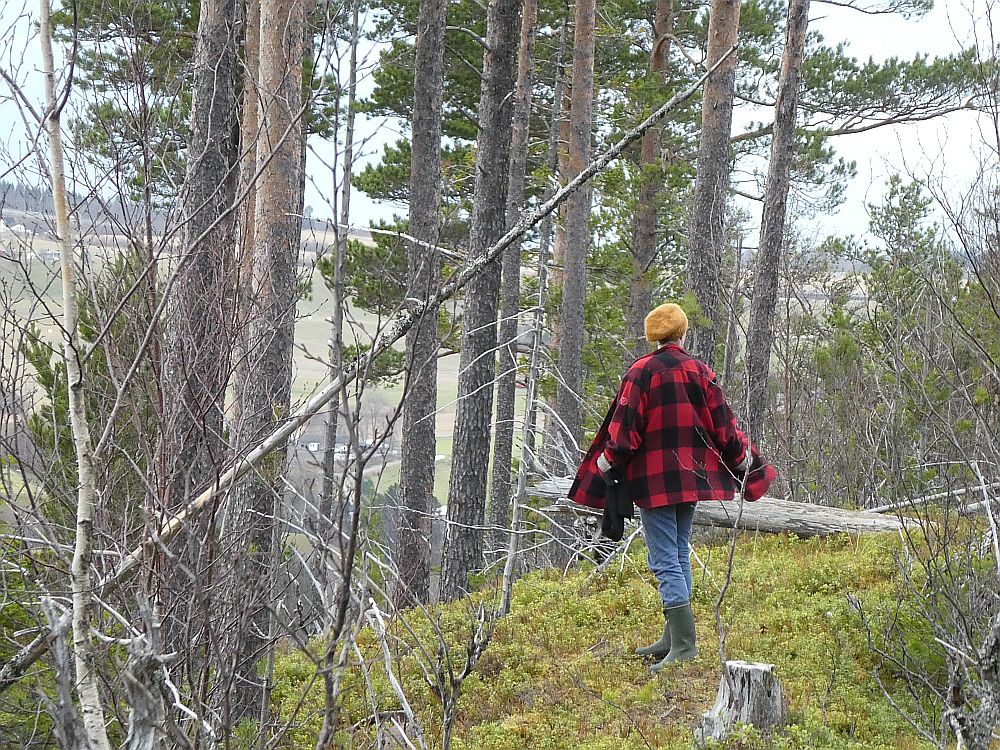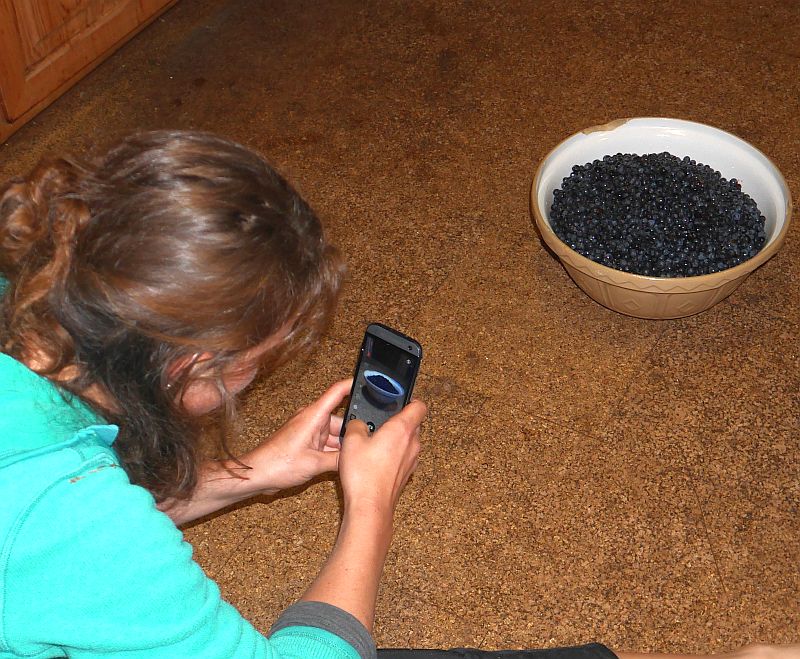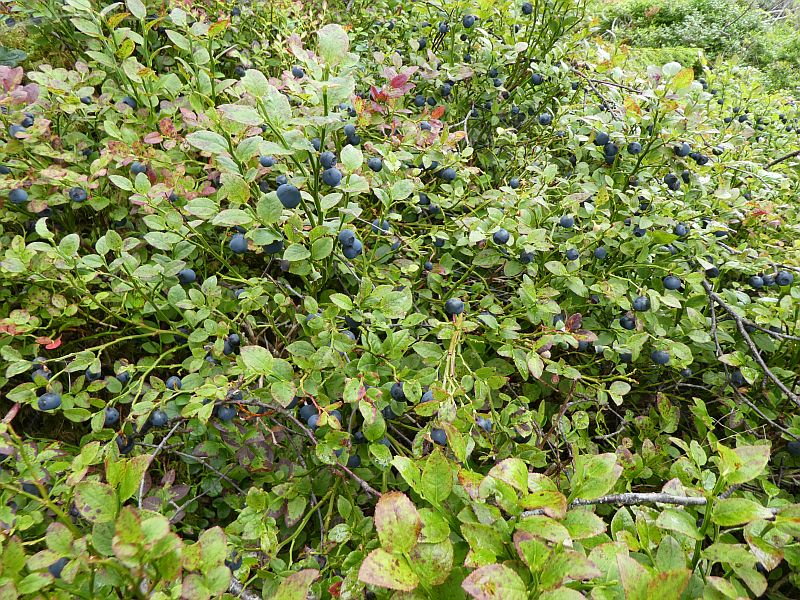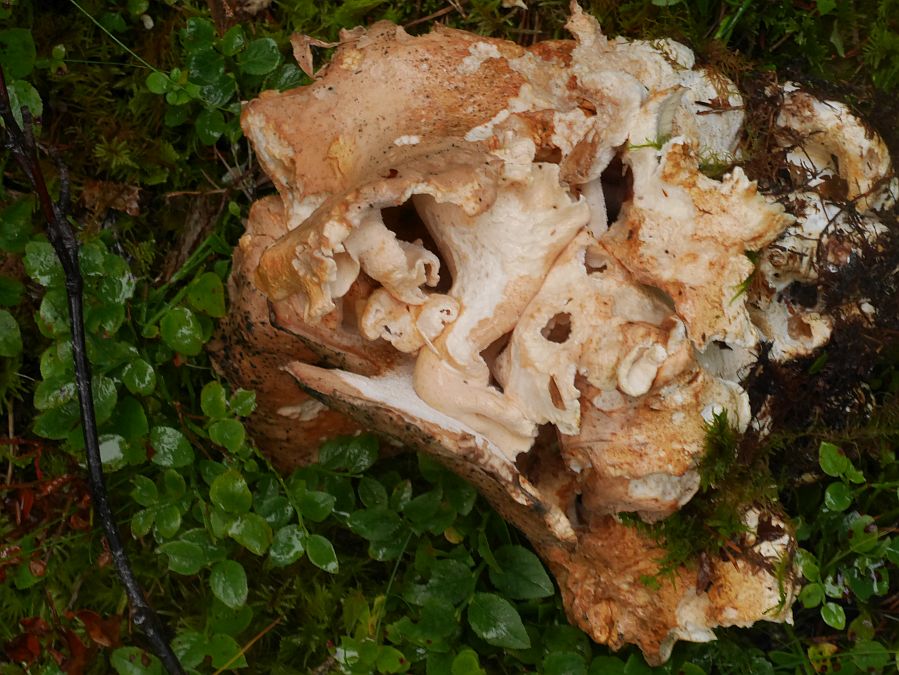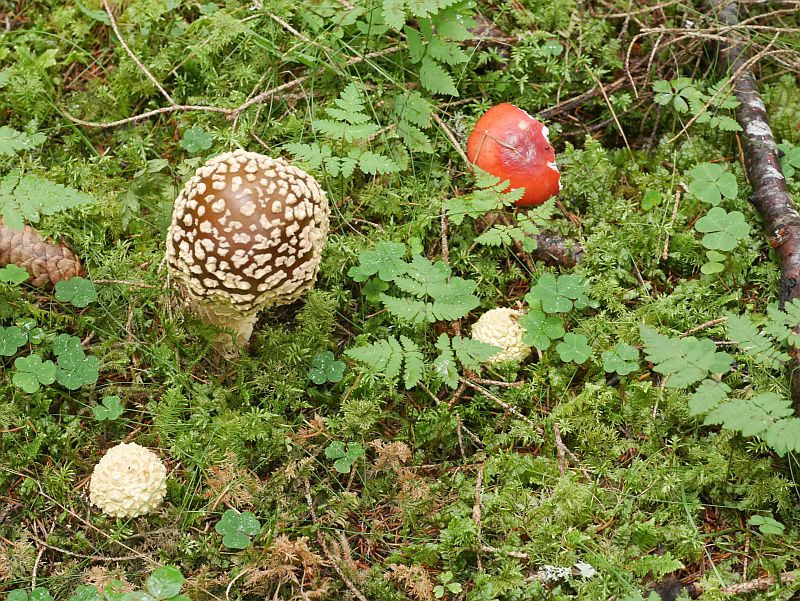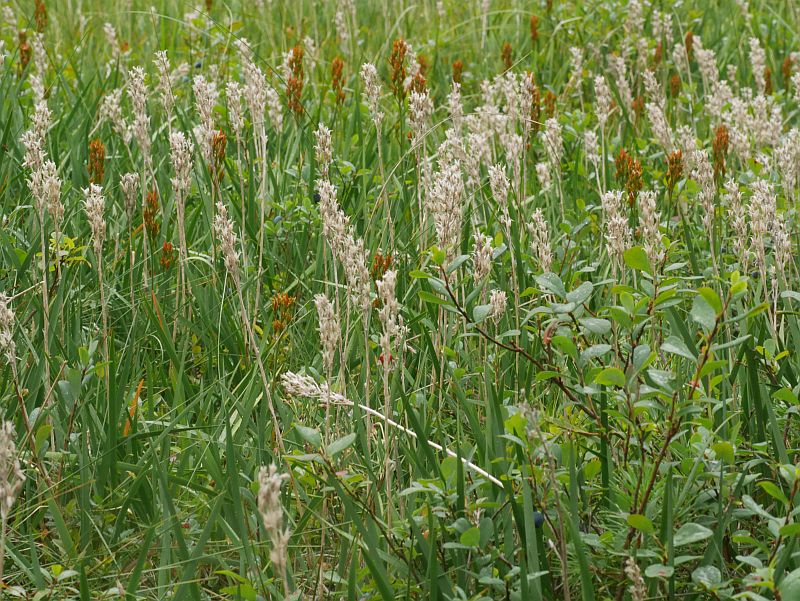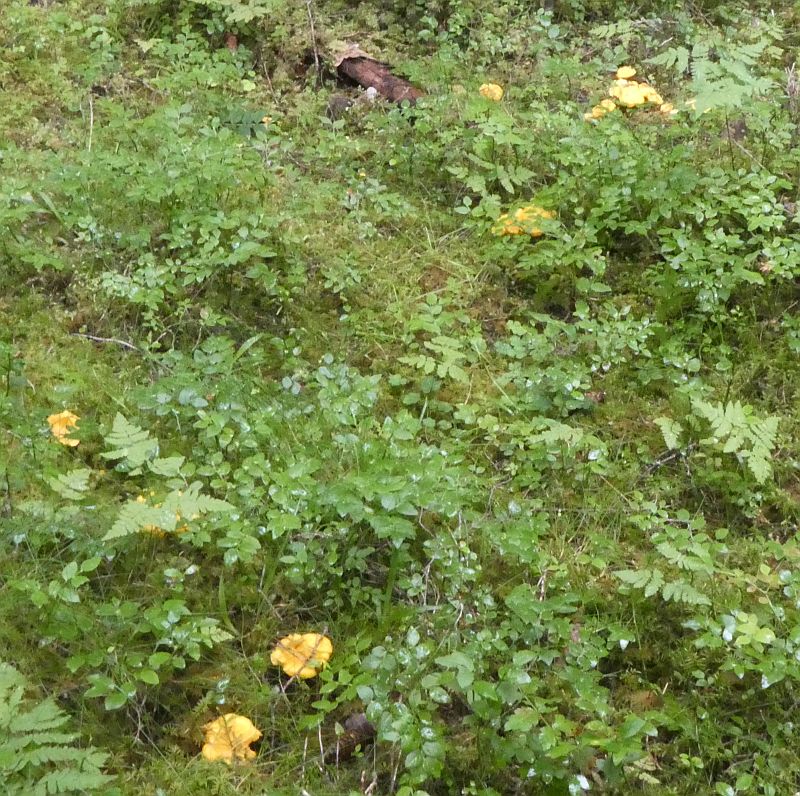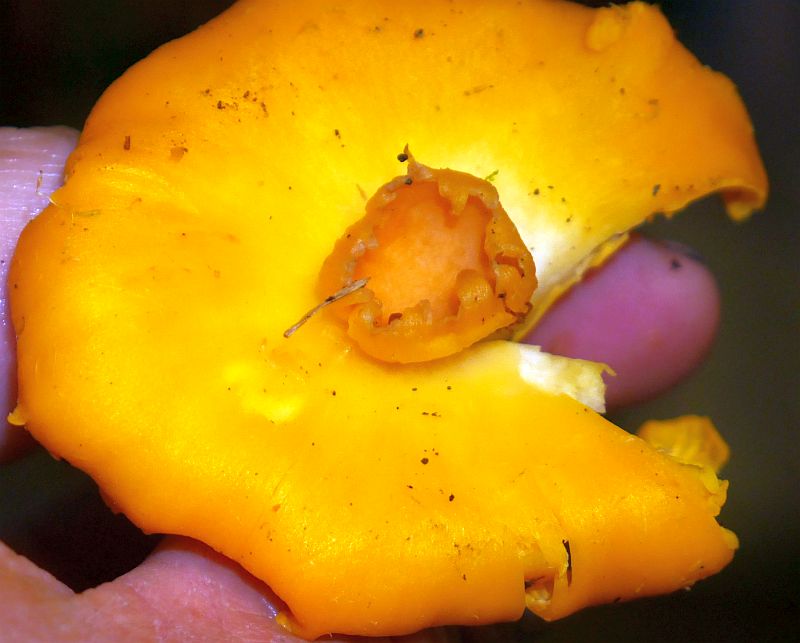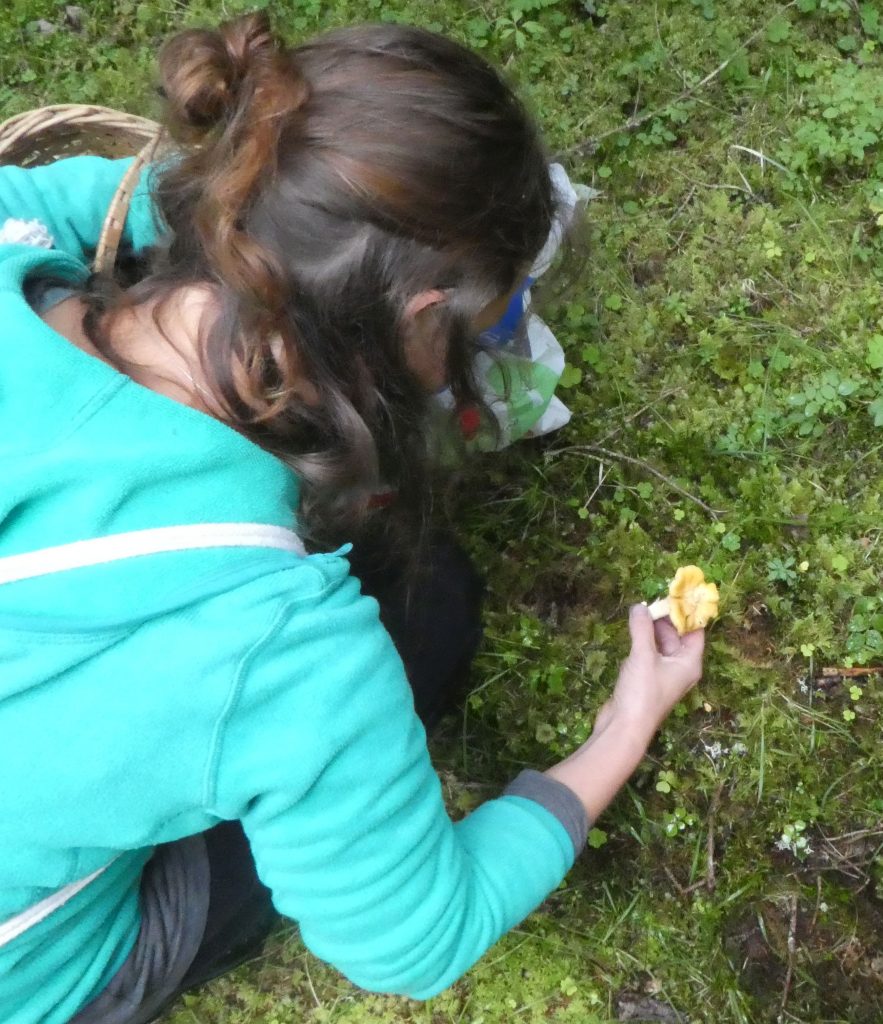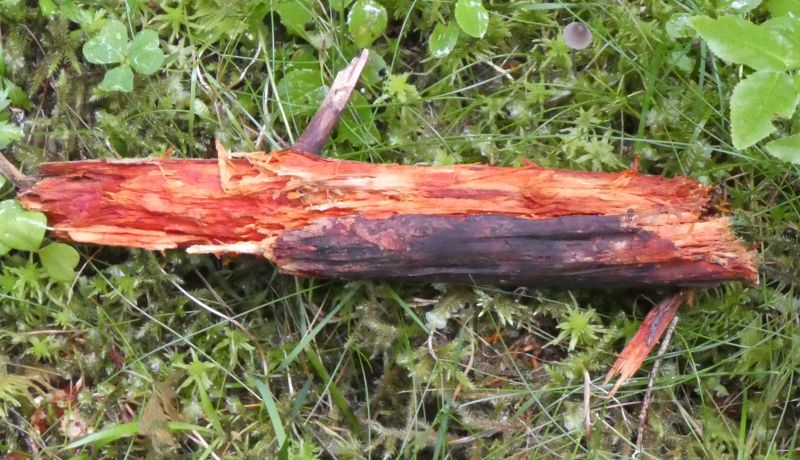It’s ridiculous but it’s been such a busy summer that I hadn’t found time for foraging mushrooms in the forest this year until last Saturday 12th October. We took advantage of our helper Aleksandra Domańska from Sweden / Poland to harvest the ridiculous amounts of winter chanterelles / traktkantarell Craterellus tubaeformis in the forest at the moment. The first we picked were frozen but it became warmer as the day progressed. We returned to our car pool vehicle after several hours with 24kg of fungi, mostly winter chanterelles but also with a good number chantarelles / kantarell. two types of hedgehog fungi / piggsopp, one sheep polypore / sauesopp (Albatrellus ovinus), one cep / steinsopp and a few yellowfoot / gul trompetsopp (Craterellus lutescens). Some of the pictures in the forest were taken by Cathrine Kramer from The Center of Genomic Gastronomy who has been filming my autumn activities for a couple of days.
Tag Archives: kantarell
Forest bounty
Spending so much time in the 3 gardens I look after – The Edible Garden; The World and Demonstration Gardens at Væres Venner Community Garden and the Allium Garden Chicago at the Ringve Botanical Gardens in Trondheim – I don’t get into the surrounding forest so often. Yesterday, we had a fantastic day foraging fungi in the forest nearby in Malvik and the forest shared with us and these will mostly be dried. The following edibles were picked:
Winter chanterelle / traktkantarell (grows in damp mossy locations in the forest)
Gul trompetsopp / yellow foot (on the edge of bogs)
Chantarelle / Kantarell – a bit late for this, but we nevertheless found a few patches
Rødgul piggsopp / terracotta hedgehog
Piggsopp / hedgehog fungus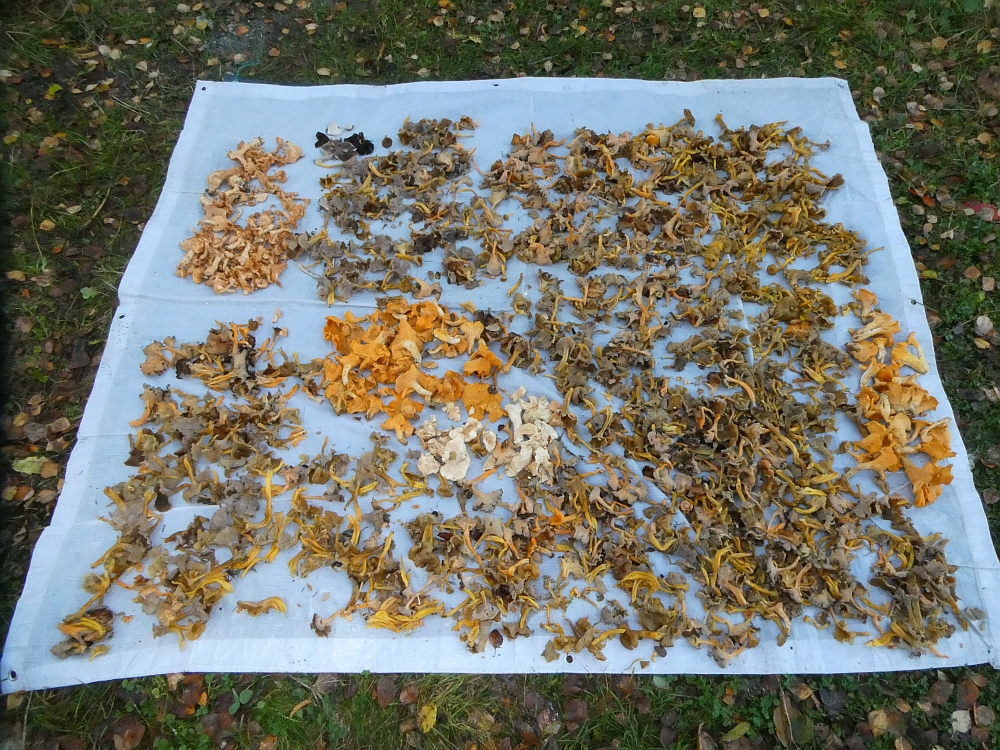 (Hydnum rufescens)
(Hydnum rufescens)
Sochan tops Mediterranean style
Thanks to Alan Bergo (@foragerchef) for reminding me to try sochan tops. This is Rudbeckia laciniata (cut-leafed coneflower) which in the double form is one of the most popular garden ornamentals here in Norway over the last 100 years and a plant that has been commercialised as a farm vegetable over recent years in Korea. I’d previously only eaten the spring shoots, but I was equally impressed by the tops which I used simply cooked with onion, garlic and yellow zucchini from the garden, various fungi picked in the woods (saffron milkcap/matriske; hedgehog fungus / piggsopp and chantarelles / kantarell) and scrambled with eggs with a little chilim added (a classic way for preparing wild edibles in the Mediterranean countries. See the pictures below.
See other posts on this great vegetable which was introduced to me in one of Samuel Thayer’s books:
Appalachian Greens
Cherokee Pizza 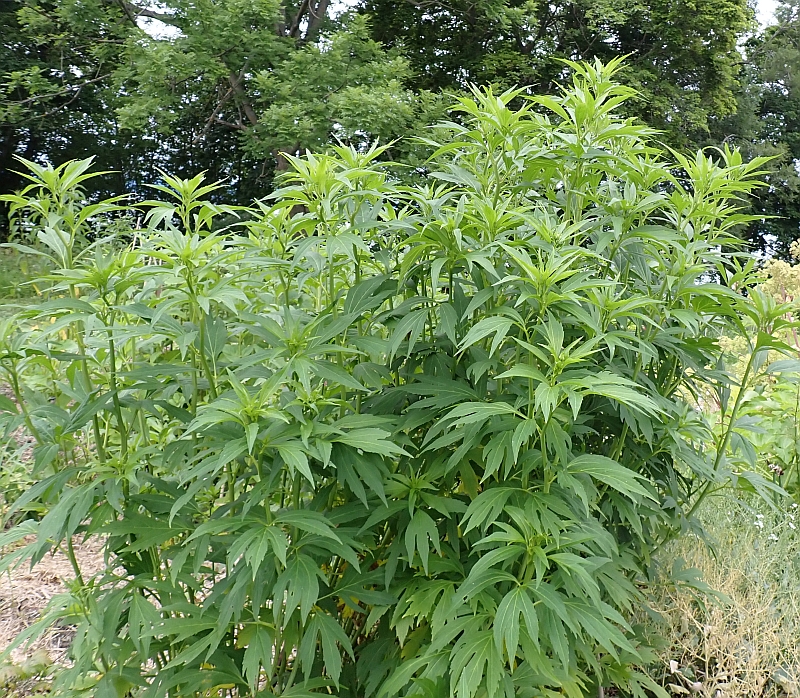
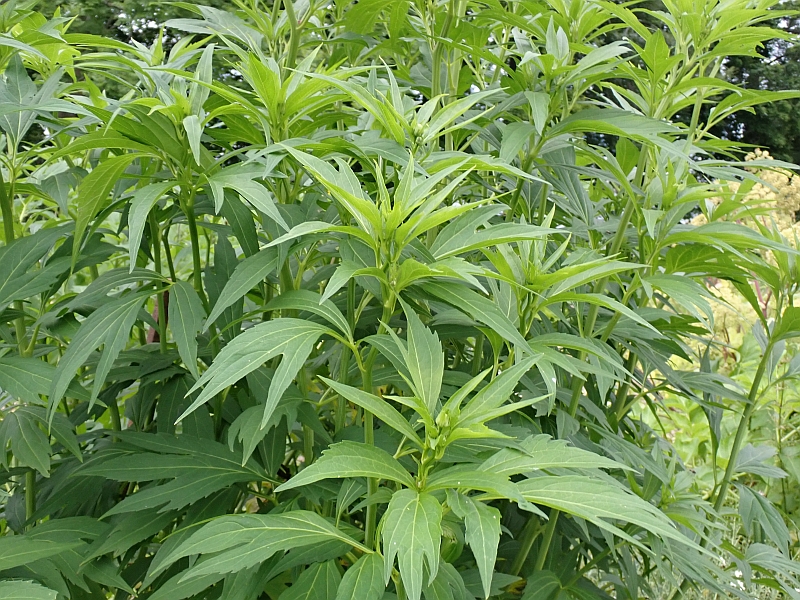





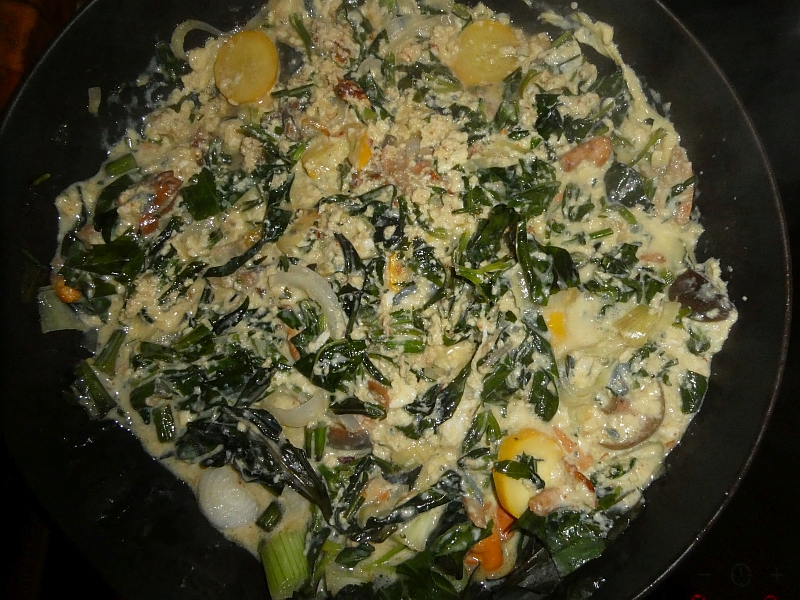
Porcini in abundance
At last, after the warm summer the porcinis (ceps / steinsopp; Boletus edulis) are coming up in large numbers in the woods, the best year since 2005! I’d read the reports on Facebook, so now is the time to harvest and dry these amazing fungi in as large amounts as possible to last until the next time, hopefully not another 16 years! Almost all were in good condition. They are often infected with a parasitic fungi that makes them inedible! In addition, we found a large patch of yellow foot / gul trompetsopp or gul trompetkantarell (Craterellus lutescens), at a place I’d picked many some years ago. Not a fungi I find every year. There were also some chantarelles (kantarell) and a few puffballs (røyksopp). The walk home with a very heavy load was thankfully mostly downhill! Now for the biggest job of cleaning them before drying!
Fungal abundance
The forest is now full of edible fungi, witness today’s haul of mostly chantarelles, winter chantarelle, hedgehog fungi (two species) and puffballs (Norw: kantarell, traktkantarell, lys- og rødgule-piggsopp og røyksopp)
JA Quiche
Jerusalem artichokes (JAs / jordskokk) in quiche? Why not?
Yesterday’s quiche included JAs, Hablitzia tamnoides (Caucasian spinach / stjernemelde), Aegopodium podograria (ground elder / skvallerkål), dandelion (løvetann), rehydrated dried chantarelles (kantarell), garlic and chili and poppy seed (opiumvalmue) topping. With a 100% whole grain Svedjerug (old Norwegian rye) and barley (bygg) crust.

Winter chantarelles / Traktkantareller
That Chantarelle Moment
Used in a delicious green wholegrain spelt pasta sauce with Malva moschata (musk mallow), Rumex acetosa (sorrel), shallots, garlic, perennial rocket etc. and a strong organic cheese!
Sopptur 16th November
(Sopptur = Mushroom picking / fungal foray)
Still masses of winter chantarelle in the woods despite for frosts a week ago…and a few chantarelle and hedgehog fungus….
Forage in Malvikmarka

